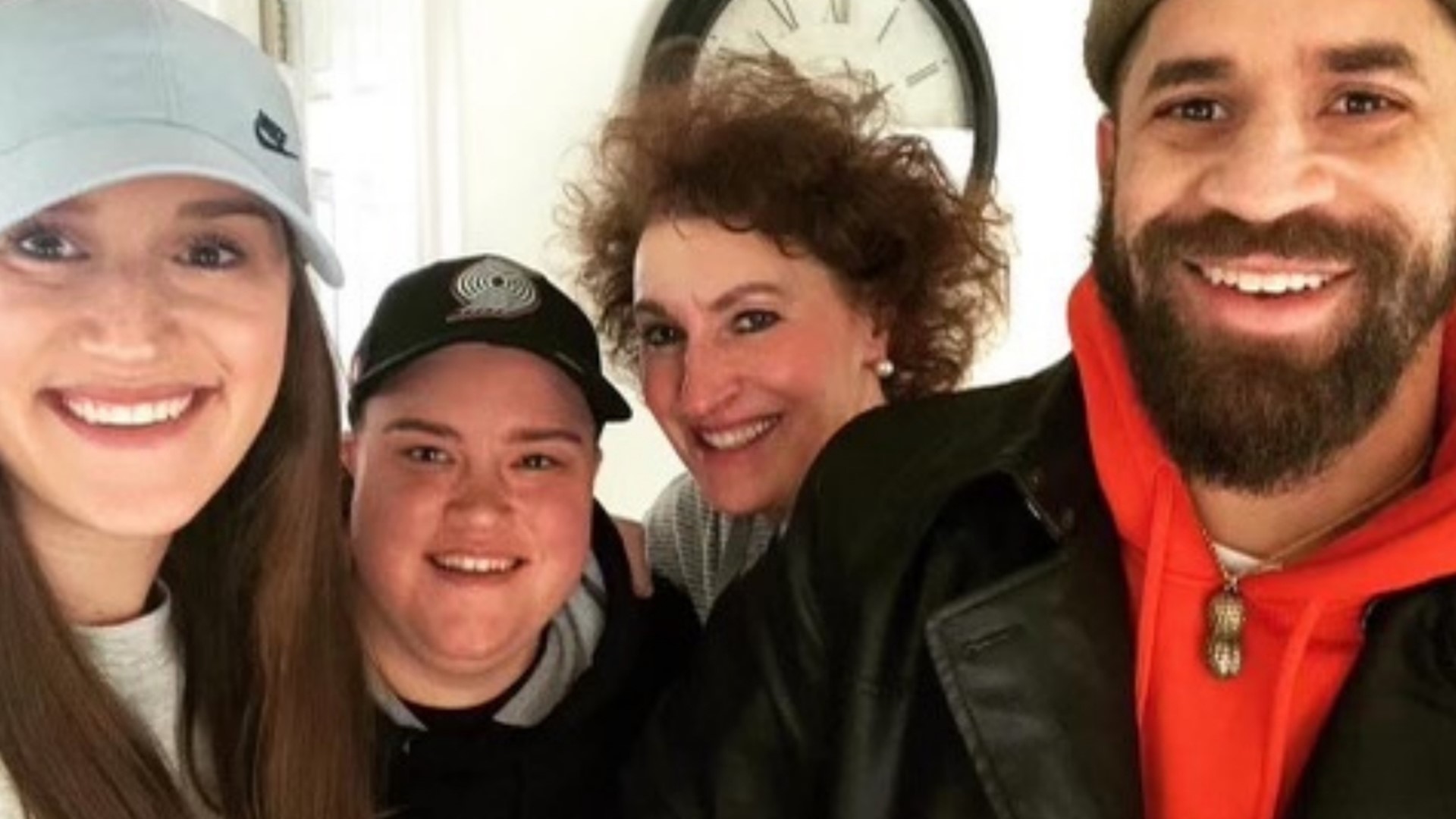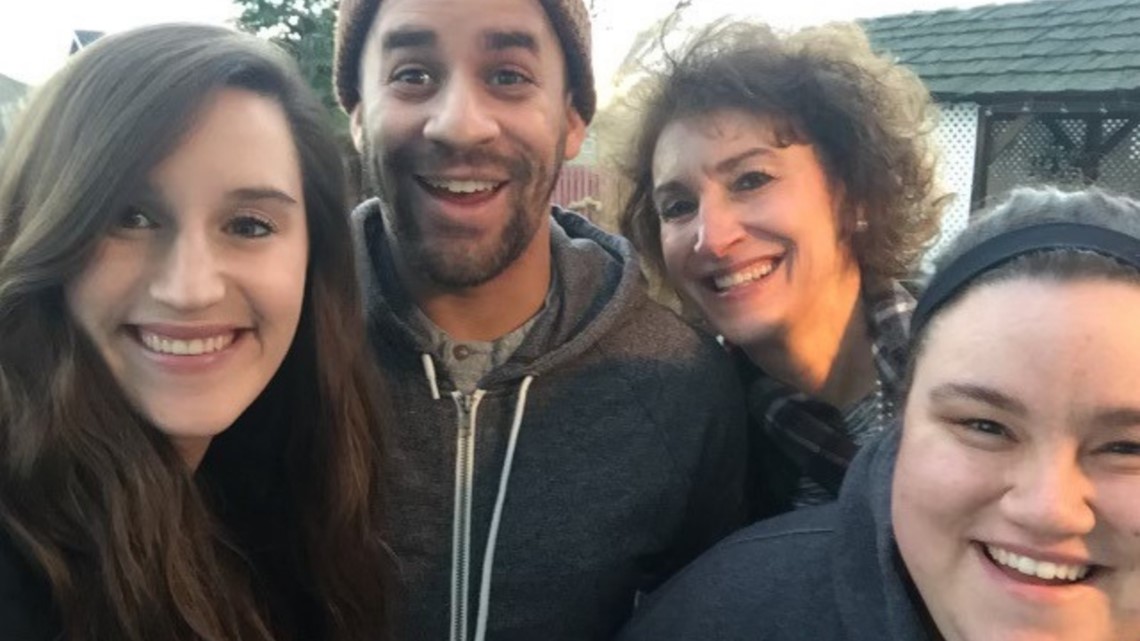'We don't care about people's lives': Oregon last in nation for access to drug treatment
Mother who lost daughter to alcohol addiction questions why state’s strategic plan to combat addiction is, according to its authors, on the “back burner."

Cathy McInnis lives with the loss every day. Her daughter, Katie Buckle, died from heart disease in March 2020, after a decade-long battle with alcohol addiction. Buckle was 28 years old.
"It’s a horrible, cruel disease. It’s so misunderstood," McInnis said, as she looked at the final photo she took with her daughter.
Buckle, who McInnis described as having an incredible smile that would light up any room she walked into, actively sought out treatment, her mom said.
"That’s the part I loved about her, is that she wanted the help," McInnis said.
But finding a place for Buckle to detox, as well as to get help for her depression and anxiety, wasn’t always easy.
"You’re just constantly on a treadmill trying to grasp for any type of help you can get," McInnis recalled.
Sometimes there were beds available near Keizer, where Buckle lived with her mother. And sometimes there weren't.
On March 1, 2020, Buckle died while in a treatment facility in California.


McInnis still mourns both her daughter’s death and the fact it happened far from home.
"Why did I have to send her to Southern California?" McInnis asked. "Why? I don’t get that."
So when McInnis learned this year that new federal data placed Oregon last among all 50 states in people who were seeking drug treatment, but couldn’t access it, she was once again, devastated.
"Fiftieth. We’re last. Think about that," she said. "Something’s wrong with that in my opinion. It means we don’t care about people’s lives."
Worst in the nation
The statistics, released late last year by the federal government’s annual National Survey on Drug Use and Health, tell a startling story. Per capita, Oregonians 12 and older who sought treatment in 2020 for any kind of substance abuse are the least likely in the nation to find it.
Oregon also ranks worst in the nation when it comes to the percent of its population with illicit drug use disorders, at over 9% of teenagers and adults. Add in legal drugs, like alcohol, and the state ranks second worst at over 18% of those ages 12 and up, just behind Montana.
Prior to the pandemic, things weren’t great: Oregon ranked 47th in access to treatment according to data released in 2020 and 48th the year before.
But not last.
"It’s devastating," McInnis said.
Mike Marshall, the executive director of advocacy group Oregon Recovers, himself recovering from addiction, chose a different word: unnecessary.
"Here in Portland, wait times for getting into treatment are 2, 3, 4 weeks," he said. "It’s probably worse in the surrounding counties."
What that means, Marshall said, is more people who want treatment but can’t access it, will die.
Marshall said there were, on average, six alcohol-related deaths a day in Oregon, and that was pre-COVID, to say nothing of rising deaths from drugs like methamphetamine and fentanyl since the pandemic began.
Marshall, himself in recovery, knows the realities first hand.
"If I can do it, the state of Oregon can do it right," Marshall said. "My addiction was that bad."
And it turns out, the state already has a five-year plan.
After Gov. Kate Brown declared addiction a public health crisis in 2018, she tasked the Alcohol and Drug Policy Commission (ADPC), an independent state agency, with developing a comprehensive approach to improving prevention, treatment and recovery.
The 89-page plan was finished in early 2020.
Marshall said little to no action has been taken on it since.
"It’s not rocket science," he said. "We can do this. It’s just a matter of will."
Heidi Wallace, the executive director of the Hazelden Betty Ford Foundation’s Oregon treatment operations, agrees.
"I don’t think [the plan] is a priority," she said. "If it was a priority, we wouldn’t be at the very bottom of the list."
And while her treatment center may be an outlier she said, with beds readily available for those with certain types of insurance, others have struggled with pandemic restrictions on capacity, and retaining staff.
Though both she and Marshall point out, every state has been in the same boat.
"You could blame (Oregon’s ranking) on the pandemic," Wallace said. "But it’s not the pandemic."
COVID not an excuse
The commission tasked with moving the plan ahead agrees.
Jill Gray, the ADPC's senior policy analyst, who helped author the strategy, said the pandemic created a "circle of problems," with many of the 14 state agencies responsible for substance abuse services instead focused elsewhere.
"The plan, I think, has been on the back burner for the past two years," Gray said. "COVID’s always going to be here, but that can’t be our continuous excuse not to make progress."
The ADPC’s strategy, which among many other changes, calls for more same-day access to treatment and a digital clearinghouse where Oregonians can view available vacancies in one place.
It also sets benchmarks, essentially goals seeking to reduce the ratio of Oregonians battling addiction and increase the percentage able to access treatment.
None of those, Gray said, have been met.
"Is it a matter of funding? Is it political will? What is it?" KGW asked.
Said Gray: "I would say it’s probably all of that and more."
To Wallace’s point about fragmentation, Gray directed KGW to a bill currently before the Oregon house in the short session that would require all state agencies involved in providing substance abuse services to meet with the ADPC at least once a quarter.
"Why does it take a bill to get everybody on the same page to meet with you guys?" KGW asked.
"I think part of it is just the force that a piece of legislation has," Grey responded.
She also wants to hear from the governor’s office that the strategic plan is a priority.
'Much work remains'
In her final State of the State address on Feb. 3, Gov. Brown called expanding access to services, including treatment and prevention, critical.
"I will continue to partner with the legislature to finalize significant investments in behavioral health this year," she said.
When KGW asked the governor's office for more detail on what she meant, it pointed, in part, to a bill that would provide grants to help recruit and retain staff, including nurses in the sector. Charles Boyle, the governor's deputy communications director, told KGW News that tackling addiction is "among [the Governor’s] top priorities" and the state is "in the middle of a transformation." While acknowledging "much work remains to be done," he indicated what he called progress the state has made during the pandemic, including:
- Nearly $17 million in workforce retention bonuses for behavioral health workers
- A $350 million package of bills passed in 2021 that included investments in the substance abuse sector workforce. The ADPC’s Gray indicated some investments were "directly on point" with the strategic plan, while the outcome of others was uncertain
- $200,000 to the ADPC to conduct an inventory of substance abuse services
- Upward of $300 million from voter-approved Measure 110 that will go to fund regional Behavioral Health Resource Networks aimed at lowering barriers to treatment
The ADPC’s Gray calls all of this a work in progress, but one that admittedly falls far short of the $100 million the commission has asked for in order to roll out its strategy. She wants a commitment that the strategic plan itself is a priority and that the governor’s office will work with them on implementing it this year.
"Everybody who works in substance abuse services has agreed, these are the steps," Gray said.
Mom on a mission
Cathy McInnis has become a mother on a mission.
She regularly attends Alcohol Anonymous meetings, both to understand her daughter’s disease, and to share her story.
Countless other parents have thanked her for speaking up, she said, for letting them know they’re not alone, when it comes to supporting loved ones battling addiction and finding affordable treatment close to home.
"We need to have some action taken," McInnis said. "I don’t know what it’s going to take."
Two weeks before Buckle died, she participated in an Oregon Recovers rally outside the state capitol, one aimed at drawing attention to what advocates call a dearth of resources.
McInnis now stands in her daughter’s place.
"From your point of view as a parent, what’s changed [since Katie’s death]?" KGW asked.
"Nothing," McInnis said. "Nothing."
VIDEO PLAYLIST: KGW Reporter Stories


